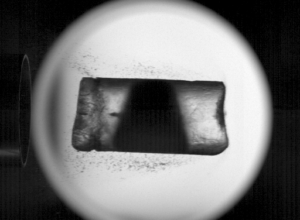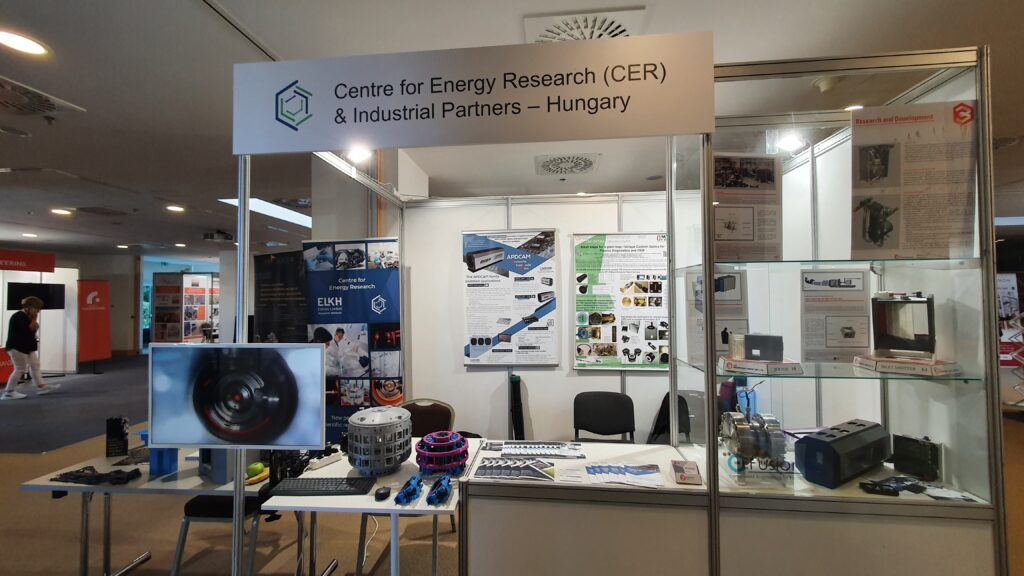
ITER is currently one of the largest scientific experimental facilities being built in an international collaboration to demonstrate the key technologies for future fusion devices on a power plant scale. In this facility, hydrogen gas heated to about 100 million °C, hotter than the temperature at the centre of the Sun is burned into helium, producing ten times more energy than is used to heat the material.
To protect the device, a safe shutdown will be ensured by 27 injectors, which will shoot a minus 260 °C hydrogen projectile (pellet) at bullet velocity, breaking into smaller ice fragments before reaching the hot plasma.
In the summer of 2022, the Department became the first in the world to produce and launch an ITER relevant pellet.

A neon pellet arriving at the breaking point; credit: Centre for Energy Research
Thanks to the achievements of the past years, this year the Hungarian fusion community was well represented at the 32nd SOFT (Symposium on Fusion Technology) conference in Dubrovnik. Of the more than 580 participants, 19 Hungarian researchers and engineers presented 17 posters and reported their results.
The department’s engineers and researchers designed, built and commissioned the experimental injector system in record time in the middle of the COVID-19, which has produced nearly 400 shots at the campus of the Centre for Energy Research since December 2021.
In addition to the scientific results, the research centre and its industrial partners also presented their work at the conference exhibition, which proved to be one of the most visited stands in the exhibition hall.


